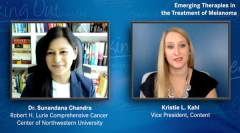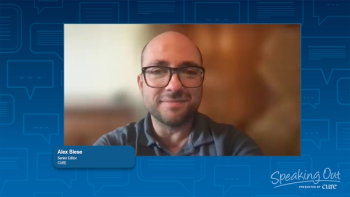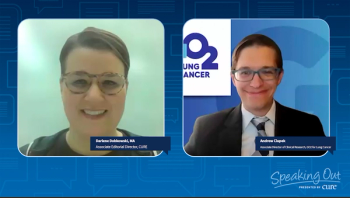
Emerging Therapies in the Treatment of Melanoma
Discussing emerging therapies in melanoma
Kristie L. Kahl: Can you talk about what adoptive T-cell therapy is?
Dr. Sunandana Chandra: Adoptive T-cell therapy is a way of treating a person's cancer with their own immune cells. It requires collecting and growing or expanding a patient's own T cells. So, the way that that's accomplished is that a piece of the tumor, or melanoma in this case, is surgically removed and then processed at a separate facility or sometimes at the institution's own facility. It's processed at a separate location, so that these immune cells in the tumor, known as tumor infiltrating lymphocytes, can be extracted and then expanded or grown. And what's unique about those immune cells is that they have the ability to recognize that person's own melanoma. So then, the patient undergoes chemotherapy, and those expanded T cells are then infused back into the patient, along with a few doses of this drug called interleukin 2, or IL 2. So that's essentially what adoptive T-cell therapy is.
Kristie L. Kahl: Where are we in evaluating these types of therapies, like TIL?
Dr. Sunandana Chandra: The therapy is logistically a little bit more challenging to administer. But this therapy is quite promising. It is important to note that it's not yet (Food and Drug Administration [FDA]) approved.
Kristie L. Kahl: What kind of data are we seeing with these therapies?
Dr. Sunandana Chandra: We are seeing that this is a very promising therapy for patients who have progressed on immunotherapy and/or a BRAF/MEK therapy, if they have a BRAF mutation. And if a patient is well enough to receive TIL therapy, then it is definitely another option for us, the medical oncologist, to consider for a particular patient. Now, not all patients may be eligible for TIL therapy based on certain clinical characteristics and tumor characteristics, but it's certainly something that we could at least consider.
Kristie L. Kahl: What do patients with melanoma have to look forward to in the treatment landscape?
Dr. Sunandana Chandra: So, you know, in cutaneous melanoma, there's a lot of new therapies that are being looked at to try to improve the patient's survival outcomes. Newer agents that are being studied in addition to TIL therapy are ones that target LAG-3, TIGIT, these class of oral drugs called tyrosine kinase inhibitors. And all of these that I just mentioned, can be used in combination, we think, with our existing immunotherapy drugs. And so that's being actively studied in clinical trials. And in addition, other options such as immunomodulators, or drugs that tweak or affect the immune system, such as STING agonists, toll-like receptor 9 agonists may also affect the immune system in a positive way that ultimately lead to cancer cell death.
Kristie L. Kahl: That sounds like a lot to look forward to.
Dr. Sunandana Chandra: Absolutely, I mean, in general, we are trying to use combination approaches, either with our existing FDA-approved drugs or new drugs all together, that target different proteins to ultimately try to cause melanoma cell death.







